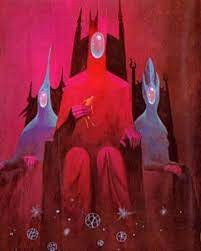I've been listening to the audiobook of A Travel to the Middle Ages, and its description of what, by the late Middle Ages, is essentially a travel industry built up around pilgrimages to Christian churches and holy sites is really interesting. One fascinating detail is the cheap, metal pins or badges pilgrims could buy to commemorate their visits. There were also more risque, erotic novelty badges sold too, as a quick internet search can show you.
All of this religion-focused travel got me thinking of something interesting to do with the standard Outer Planes. Given their nature, they would certainly fit the bill as "holy sites." Maybe a lot of planar travel is in pilgrimage? This is a take that wouldn't be congruent with all views of the planes, certainly, but I think it would fit with a Planescapian sort of attitude, with planar types taking advantage of the clueless Prime visitors.
All you would need is these sorts of visitor-catering facilities and services to be present on each plane. They don't necessarily have to be particularly safe or even particularly customer friendly, really, if real history is any indication.
Of course, there would need to be things for pilgrims to see. Certainly, there are a lot of wondrous (super)natural phenomena described in any D&D planar book, but I think some sorts of dubious relics are in order here, just like in the real world. Accoutrements of gods? Maybe even relics of martyred ones?




.jpg)






















